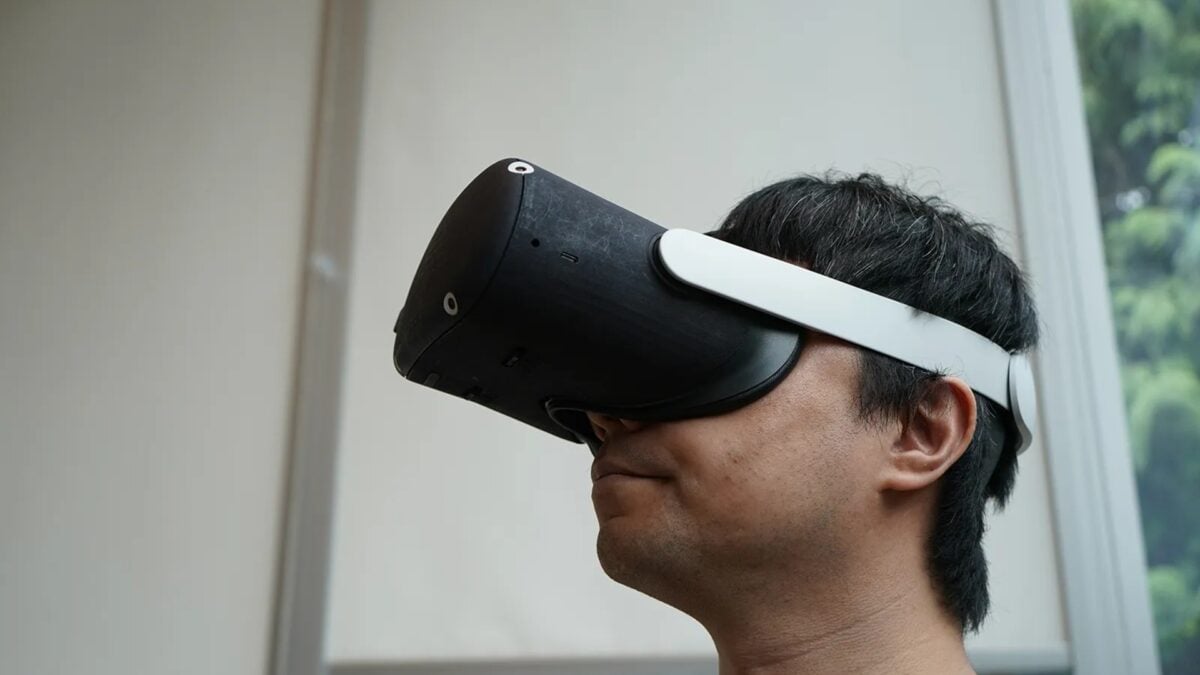Meta Says Its Comically Large VR Headset Prototype Can Almost Mimic Human Sight

There are a lot of lofty goals in the world of VR, but delivering hyperrealism is among the most elusive. That’s because there are tons of constraints with a realistic, world-rendering face computer: there’s resolution, field of view, power, weight, battery—you name it. But just because obstacles abound doesn’t mean the titans of XR and VR aren’t trying, and when it comes to the ol’ college try, Meta definitely gets an A for effort.
In its latest endeavor, Meta unveiled Tiramisu, a new headset prototype that it says is the closest it’s gotten to “passing the visual Turing Test.” In nerd lingo, that means its headset is inching towards tricking the eyes into thinking that a virtual world is actually a real one. Without using this very experimental headset for myself, it’s hard to say whether that’s true or not, but if we’re to believe Tiramisu (a fine dessert, I may add) is actually as advanced as Meta says it is, the future of VR may be less cooked than we thought.
Meta Reality Labs just showed their new VR headset prototype called Tiramisu which offers stunning realism with 90 PPD, ultra-high contrast and brightness 14x that of Quest 3. It’s bulky with a narrow FOV but offers a glimpse of what could be visually possible in the future. pic.twitter.com/82pOCiZqiQ
— Nathie (@NathieVR) August 7, 2025
According to Meta, Tiramisu blows the Meta Quest 3 out of the water in a few key categories. One of them is contrast, where Meta says the Tiramisu has 3x the ability of the Quest 3. Another is brightness, and Meta says that Tiramisu has a whopping 14x ability in that arena compared to the Quest 3. The last, which is more esoteric, is called “angular resolution,” and that helps users in VR see finer details in virtual worlds. In this last category, Tiramisu has 3.6x the ability of the Quest 3. On paper, that’s a pretty wild improvement over what we have available to us in this present moment, but (and here comes the approach back to Earth) there’s still a ways to go before any of this comes to a headset near you.
As you may have noticed by the pictures Meta provided, Tiramisu is—how do I say this—a big, chonky boy. It’s the long Furby of VR headsets, which definitely puts a damper on the whole super-immersion thing. I don’t know about you, but if I’m wearing an oversized trough on my head, that might break the illusion of a hyperrealistic VRChat sesh with my buds. On top of that, Meta says the FOV of its groundbreaking experimental headset is also (contrary to the size of the headset) very small. In fact, it’s only 33 x 33 degrees. To put that in perspective, the human eye typically sees about 200 degrees with a vertical FOV of 135 degrees. As you may have noted with some back-of-the-napkin math, that’s a pretty big difference.
But this is all experimental stuff, to be fair, and the fact that Meta can achieve those improvements even with a very, very small window of visual information is exciting in and of itself. There are tons of hurdles to translating that research into something commercially viable—on top of the size, Meta is using glass optical lenses as opposed to plastic, which I’m going to go ahead and assume are a f**kton more expensive. Big and expensive haven’t exactly translated well in the VR world; just ask Apple.
I started this week by declaring that VR is cooked, and maybe it still is, but that doesn’t mean I want it to be cooked. As much as I’m excited about the emergent future of smart glasses, I still think endeavoring to create a more immersive face computer is not just fun, but potentially groundbreaking. If Tiramisu is any indication, we’ve still got a while until we arrive at that hyperrealistic future, but I think I speak on behalf of all the other VR nerds out there when I say, I’d like some dessert eventually.









